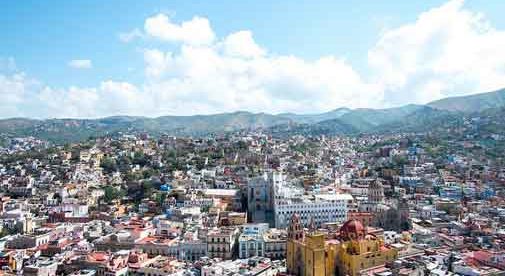| Airlines Propel Mexico's Tourism Rise
Forty new direct routes to Mexico were introduced within the first five months of the year. The destination has also
worked to increase flights within the country by improving connectivity and access to the states of Campeche,
Yucatan, Chiapas, Quintana Roo, Tabasco and Oaxaca through the Maya World ...
|
Last updated: 01:35 PM ET, Thu December 21 2017
Airlines Propel Mexico's Tourism Rise
Direct flights to Mexico increased dramatically in 2017, and the rise in connectivity is helping drive the destination's impressive growth.
According to the Mexico Tourism Board (MTB), the country has added 2.6 million seats over the course of the year to reach 28 million overall. The growth, which includes new direct routes as well as additional seats added on existing routes, signals a stellar 10.2 percent jump over 2016.
Forty new direct routes to Mexico were introduced within the first five months of the year. The destination has also worked to increase flights within the country by improving connectivity and access to the states of Campeche, Yucatan, Chiapas, Quintana Roo, Tabasco and Oaxaca through the Maya World initiative.
Mexican carriers Aeromexico, Interjet and Volaris accounted for at least half of the increase in capacity, while international airlines—including the Big Four U.S. carriers—contributed to the remaining half.
Mexico City saw a majority of the expansion, accounting for roughly 37 percent of the new routes. The Mexican capital is a versatile destination for both business and leisure and is well positioned as the nation's primary international connection hub.
Popular tourist destinations like Cancun, Puerto Vallarta and Los Cabos saw an increase in seats this year as well.
Cancun and the Riviera Maya will be especially popular this holiday season. According to Reportur.com, hotel occupancy in Cancun and nearby Puerto Morelos is forecast to reach 86.2 percent between December 21 and January 7, 2018.
"For this closing of the year we hope that we will reach the goal of number of visitors last year and we can even be 2 percent up; last year there were just over 4.7 million visitors and we hope to surpass that figure," said Cancun Convention & Visitors Bureau director, Lizzie Cole Guerrero.
Meanwhile, hotel occupancy of 86.5 percent is expected for Riviera Maya between those same holiday travel dates.
READ MORE: Mexico's Bold New Message for the World
"This continued growth in international air connectivity speaks to Mexico’s attractiveness as one of the world’s top tourism destinations and our continued potential to outperform the international tourism industry as a whole," said MTB CEO, Hector Flores in a statement.
"These new routes and expanded capacity will enable us to continue to grow share of travelers from established markets in North America and Europe, as well as expand in such high-potential markets as China, Japan and Korea."
The increased air connectivity has also bolstered Mexico's status as a premier destination for meetings and events. The MTB announced Wednesday that its 2017 Meetings and Events program led to 6.7 percent growth in the sector from January to October, compared to the same period during 2016.
Follow TravelPulse
For more information on MEXICO TOURISM BOARD, MEXICO, CANCUN, RIVIERA MAYA, LOS CABOS, PUERTO VALLARTA
For more AIRLINES & AIRPORTS NEWS
















